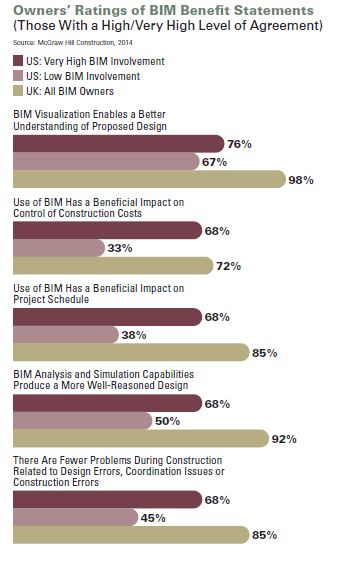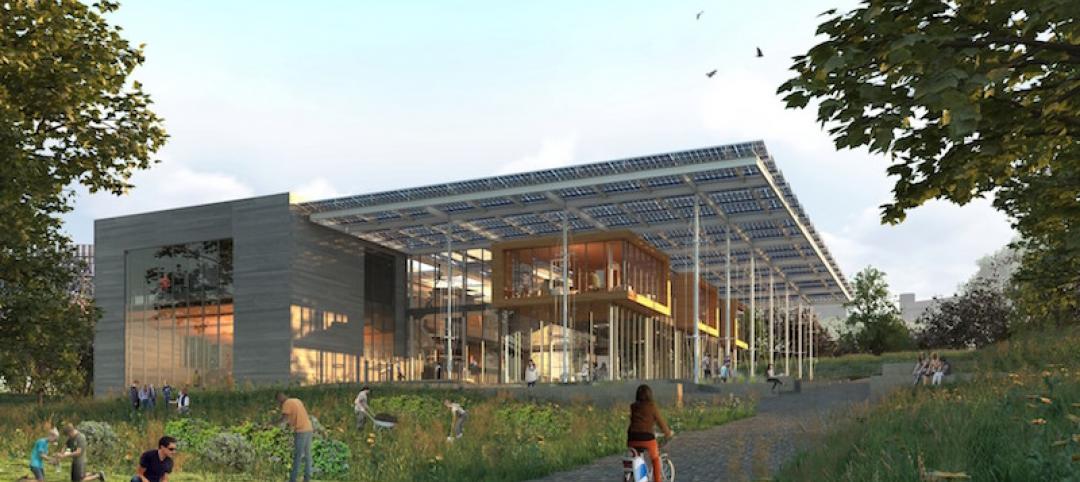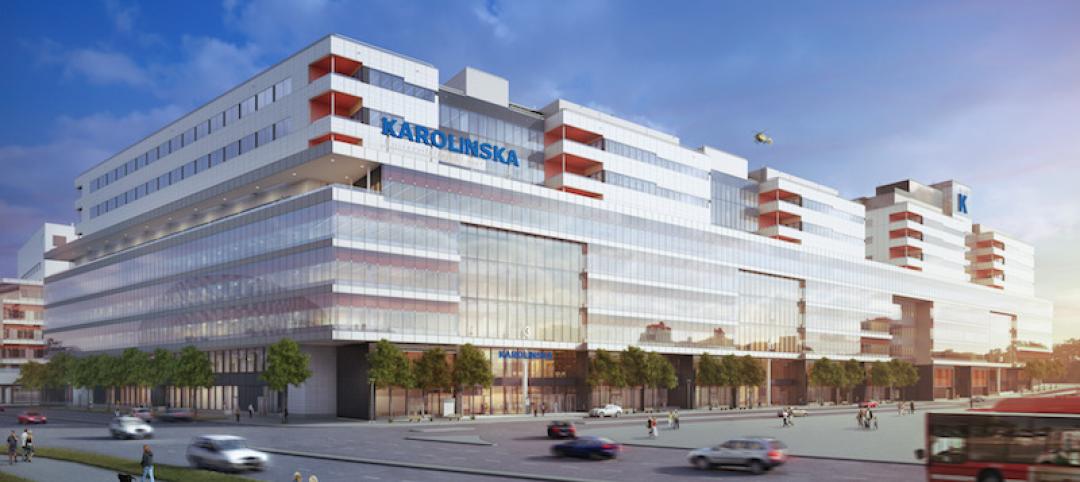More and more facility owners are seeing the benefits that building information modeling can bring to their projects, according to a new McGraw Hill Construction SmartMarket Report, “The Business Value of BIM for Owners.” Those benefits include enhanced team collaboration, streamlined facility maintenance, easier understanding of concepts, improved accuracy and potential cost savings.
Skanska’s Hal Jones, virtual design and construction director, was quoted several times in the report, which also features Skanska’s Connect Plus M25 consortium that is managing and improving one of Europe’s busiest highways. Here, Jones expands upon some of the thoughts he provided to McGraw Hill on how to extract the most value out of a BIM-enabled design and construction team:
Engage the team early and write a plan. First, develop clear guidelines for the use of BIM that reflect the requirements and capabilities of the entire project team. By focusing on what the team can expect to produce and how they should collaborate, the owner is establishing a steady set of ground rules for success. An owner can also minimize duplicate work by engaging a construction manager early in constructability review/coordination and by using trade contractors in design-assist roles.
…and stay involved, yourself. In order to maximize the collaboration amongst the AEC team, the owner should be an active participant in the project. It’s in the owner’s best interest to be accessible and engaged. It promotes both team unity and accountability when the owner is involved in the day to day decision making.
Begin with the end in mind. As early as possible, clearly define how you want to use project data and BIM post-construction so that the AEC team can more readily support your facilities management needs. By establishing this in the beginning, the owner is more empowered to get the information they need in a format that is effective for their life cycle management goals.
Focus on total cost of ownership. It’s important for owners to remember that the value (savings) of BIM on a project is often in the form of money or time not wasted, rather than a quantifiable reduction in total cost or schedule. Likewise, do not focus on the perceived up-front cost of BIM, but rather the total value brought to the project.
Use BIM as the basis for contract documents. Consider generating contract documents from the model and require that the design team maintain and update models through the construction phase. This assures that the model and documents accurately reflect each other throughout the project life cycle, while also allowing the owner to use the model as part of their facilities management program, if desired.
Promote a collaborative environment. Collaboration among the team is paramount. Good BIM-enabled projects cannot be successful without a means to collaborate quickly and easily. By using the model as the vehicle for communication of updates, changes, and so forth, the team can more readily recognize problems and identify solutions together. It is also important to clearly define the platform that will be used for collaboration and file sharing. Tools like Microsoft Sharepoint, Bluebeam, and BIM 360 Glue empower teams to share and cooperate. These tools should be identified and agreed upon early so they can align with the intended use of BIM by the team in addition to the final deliverables.
More from Author
Skanska | Dec 4, 2023
4 key innovations and construction trends across airport design
Here are some of the key trends Skanska is seeing in the aviation sector, from congestion solutions to sustainability.
Skanska | Jun 29, 2023
K-12 school construction: 5 ways strong community relations can lead to success
When constructing a K-12 school, building positive relationships with the community—including students, parents, school staff and residents—is critical to the success of the project. Here are five ways Skanska puts the community first when building K-12 schools in the Pacific Northwest.
Skanska | Mar 14, 2023
Skanska tests robots to keep construction sites clean
What if we could increase consistency and efficiency with housekeeping by automating this process with a robot? Introducing: Spot.
Skanska | Jan 27, 2023
Key takeaways from Autodesk University 2022
Autodesk laid out its long-term vision to drive digital collaboration through cloud-based solutions and emphasized the importance of connecting people, processes and data.
Skanska | Dec 5, 2022
5 ways sustainability professionals can help reduce construction's carbon footprint
Mark Chen, Sustainability Manager at Skanska, has found five specific ways to help the construction industry reduce its carbon footprint.
Skanska | Jul 5, 2022
Tour the new Patricia Reser Center for the Arts in Oregon
This month, the community of Beaverton, Oregon, welcomed a new haven for artistic expression with the opening of Patricia Reser Center for the Arts (The Reser).
Skanska | Jun 22, 2018
What owners should know before choosing the design-build project delivery method
Outside of drawing up a well-written contract, owners often overlook a key attribute that can significantly impact the success of a design-build project, writes Skanska’s Julie Hyson.
Skanska | Dec 7, 2017
Busting the myths: What the “S-word” can mean for construction and development
Sustainability, it’s a trendy term. The problem, however, is that it’s being used in so many different ways that people don’t even know what it means anymore.
Skanska | Aug 15, 2016
Future proofing hospitals
By improving the physical layout of hospitals and medical facilities, we can enhance and increase safety mechanisms, improve care, and help reduce the exposure to medical errors, writes Skanska USA's Andrew Quirk.
Skanska | May 6, 2016
Infographic: The greening of healthcare
By adopting green building and sustainable practices, healthcare facilities can save $15 billion over 10 years. Skanska's infographic spells it all out.















